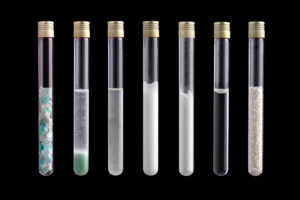Enzymatic recycling: Carbios inaugurates industrial demonstration plant
On September 29, 2021, we were invited to attend the opening event of the industrial demonstration plant in Clermont-Ferrand / France. Carbios pursues two goals on the installed system: validating the efficiency of its enzymatic recycling process and developing the specifications for future plants on a large industrial scale.
More than ten years of development work have gone into the C-ZYME® technology*. With the formation of a consortium around Carbios in April 2019, consisting of L’Oréal, Nestlé Waters, PepsiCo and Suntory Beverage & Food Europe, Carbios received support from the industry. In the same year, L’Oréal and Michelin acquired shares in the company and, more recently, L’Occitane, which now hold 5.91%, 4.36% and 2.36% of Carbios’ capital, respectively.
The commissioning of the demonstration system marks the cumulation of the C-ZYME development. It represents the last step before commercialization.

Fig 1: Test tubes – Steps in the Carbios PET recycling process. (Photo credit: Jérôme Pallé)
The C-ZYME® recycling process uses an enzyme that is capable of depolymerizing the macromolecular structure of PET. The depolymerized monomers are purified in the technical process before they are repolymerized into PET. According to Carbios, the quality of the rPET material obtained by enzymatic recycling is comparable to that of virgin PET material. Carbios promises unlimited recycling of all types of PET waste – clear, colored, opaque, complex plastics, polyester textiles – as well as the production of 100% recycled and 100% recyclable PET products that retain their original quality throughout.
In a first step, PET waste (flakes, textile or else) are fed into an extruder and converted into expended pellet shape. Under the prevailing process conditions and process engineering sequence in the extruder, the granules are melted. The process step prepares the PET waste in such a way that the enzymes in the subsequent depolymerization process can take up their work in the polymeric PET structure and carry out the depolymerization effectively: Over a residence time of 10 hours in the reactor, the enzymes convert the polymeric material into monomers.
